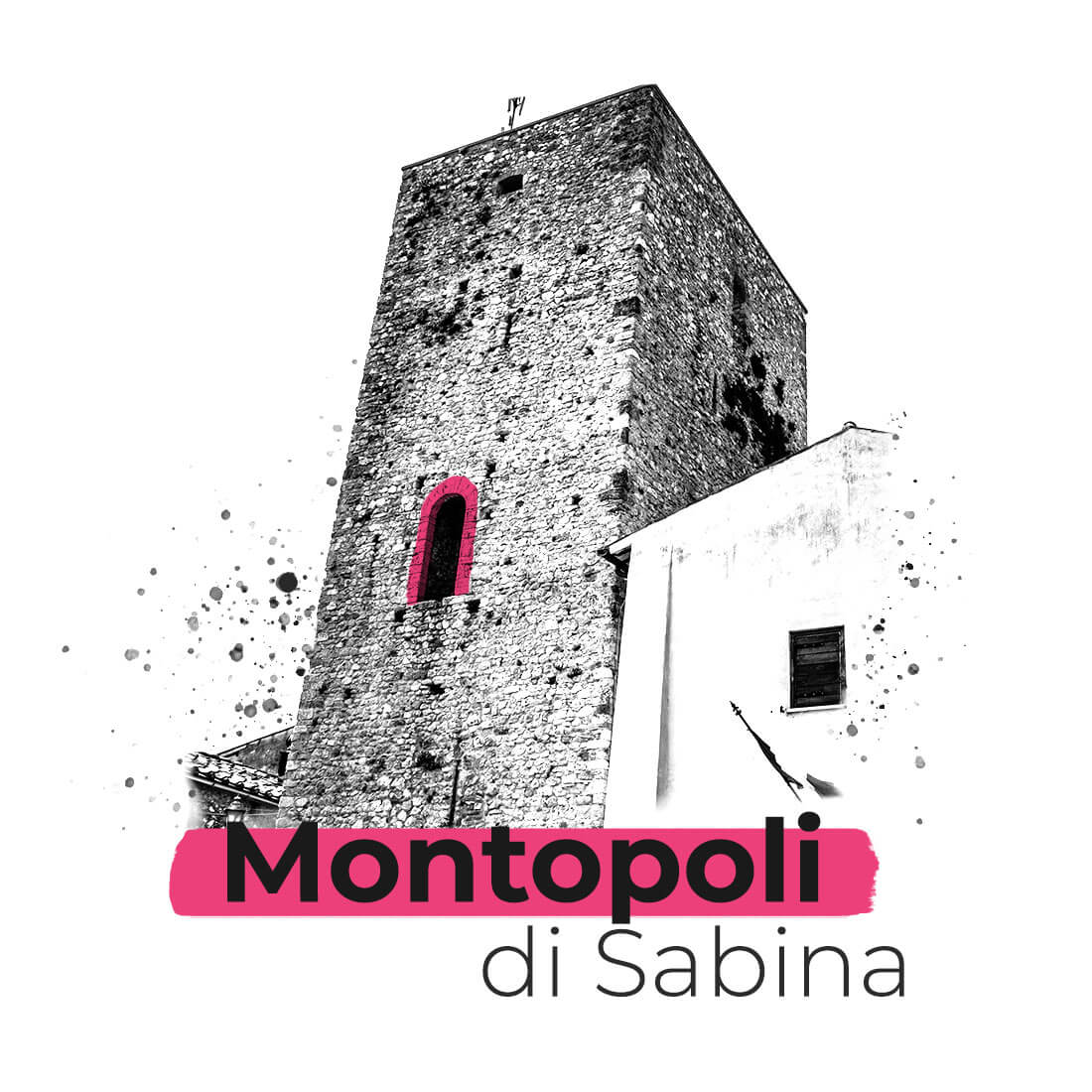The Torre Ugonesca ( Ugonesca Tower) of Montopoli di Sabina, squared and regular masonry with no crowning battlement, is equipped with a half-height door and an archer slit.
Ugonesca Tower

Position
Via Colonna, 15
02034 Montopoli di Sabina (RI)

Opening hours
Open by reservation

Contact Us
For information and availability of any guided tours, contact GeoSabina InfopPoint by clicking on the button:
The Torre Ugonesca ( Ugonesca Tower) of Montopoli di Sabina, squared and regular masonry with no crowning battlement, is equipped with a half-height door and an archer slit.
Reaching the top, the viewpoint is superb: you spans the Abbot of Farfa with all municipalities and the castles of the valley at the Gran Sasso and the Terminillo, from Monte San Pancrazio in Umbria to Monti di Tivoli, and on clear days to the stands recognizable on the horizon silhouette of St. Peter’s Dome.
The Torre Ugonesca was erected between 997 and 1038, in the highest point of the municipality and up the existing fortifications curensis pre-Roman timed, still visible in its foundations today.
The building, designed by Emperor Henry II and Abbot Hugo I of Farfa, was intended to create a control network and defense around the Farfa Abbey, a sort of belt made up of Torre Baccelli (in the territory of Fara Sabina), from the tower of Castelnuovo di Farfa (no longer exists), and precisely from Torre Ugonesca of Montopoli di Sabina.
Abbot Hugo I of Farfa was undeniably one of the most celebrated of Sabine Middle-age characters: he studied and wrote the story of the rich heritage of abbots, also composed by himself and defended with weapons, today atthe pinnacle of prestige and of fame mostly thanks to his dedication.
To be appointed to Abbot of one of the most prominent Benedictine monasteries of Europe, Farfa, in November 997, the one who will be later celebrated as “Ugo the Great” – born in Antrodoco around 972 from an influential and wealthy family of the Abruzzi region, which dominated the high Sabina and part of Abruzzo – poured a substantial bribe to Pope Gregory V.
Despite this simoniac startup, he headed the abbey fortunes for 41 years – one of the most troubled periods in the history of the Church – and made Farfa one of the centers of highest spirituality of Europe, introducing the Cluniac reform and the observance of Benedictine rule.
He had at his disposal an army, a fleet stationed at Civitavecchia, and co-opted excellent lawyers, talented lawyers and notaries who worked in the courthouse located outside the monastery walls.
With the aim of defending the rights of the monastery – also embellished in external structures, making it an evocative home for sumptuous liturgical ceremonies and prestigious destination for prominent people, including popes and emperors – he was immersed in the struggles of factions not hesitating to face, even harshly, violent and controversial characters as were the Roman nobles and the lords Sabines of that time.
Thanks to the work of the Sabine painter Franco Ciferri and a municipal administration project in collaboration with the artist Mario Bagordo, the Torre Ugonesca and the nearby Casa del Capitano host works of contemporary art installations and exibitions, constituing the first Gallery of Modern Art in the Sabine region.





